How To Build a Cheese Board Like a Pro
Create the cheese board of your dreams with these expert tips.
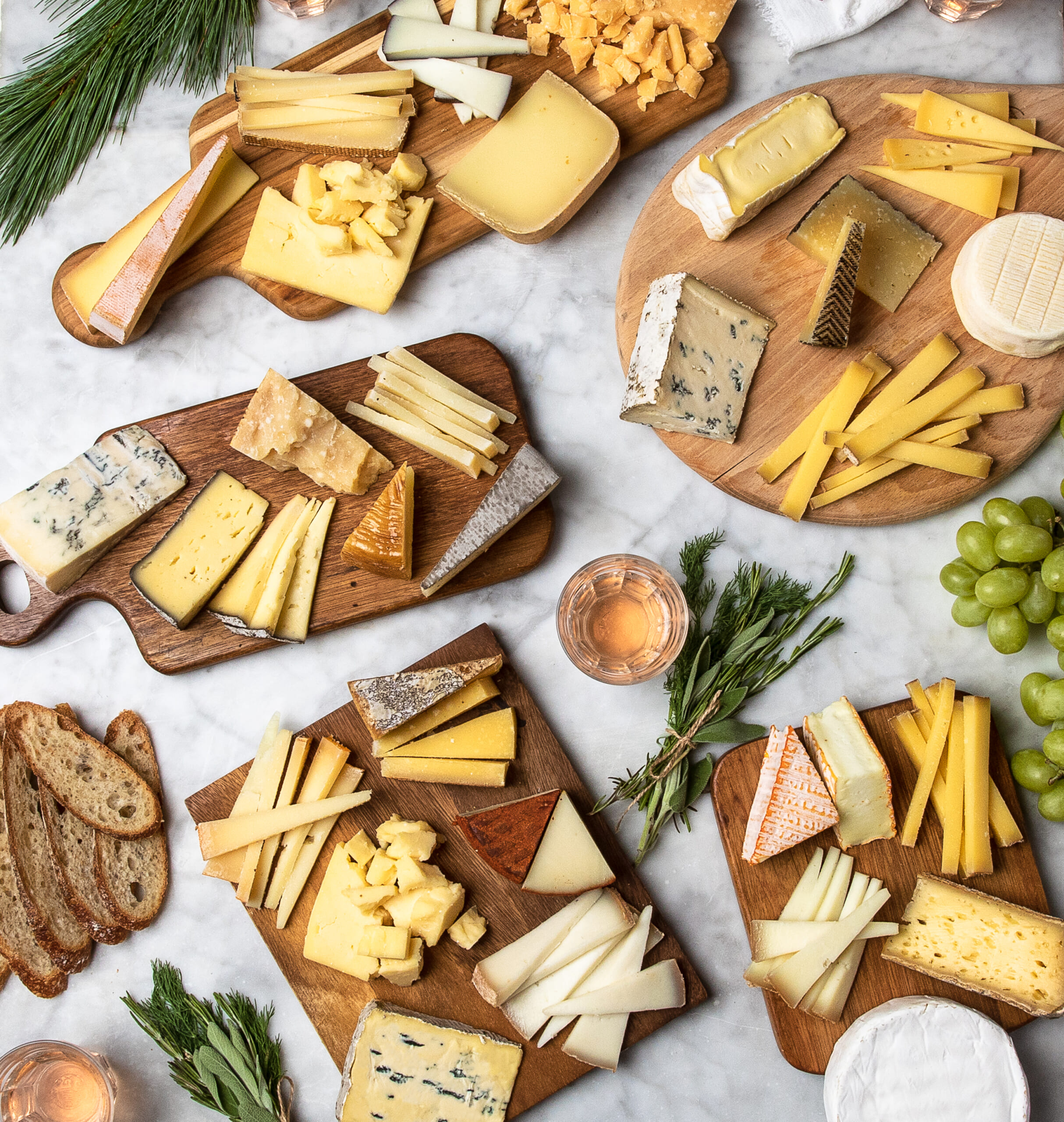
It’s always a good time to build a cheese board, and with Valentine’s Day upon us, indulging in fine fromage at home is a better idea than ever. Instead of just piling random cheddar cubes next to a row of sad crackers, consider elevating your cheese board game with playful flavor pairings, unexpected accompaniments, and eye-catching combinations.
The best boards often boast a freewheeling “controlled chaos” aesthetic, where blue cheese frolics with chocolate cookies, goat cheese dallies with blueberry jam and sliced red peppers colorfully step in for crackers. A well-curated cheese board can co-feature cured meats, olives, nuts, fruits, veggies, crackers and sweets, and is a perfect pre-or post-dinner treat for two. Cheese boards also pair exceedingly well with all manner of wines.
So what are some essential tips to keep in mind when constructing the cheese board of your dairy-fueled dreams? We tapped Michele Molier, a top cheese educator and Zoom class instructor at Murray’s Cheese in New York City, on how to build a board like a true curd nerd.
Pick At Least 3 Different Cheeses
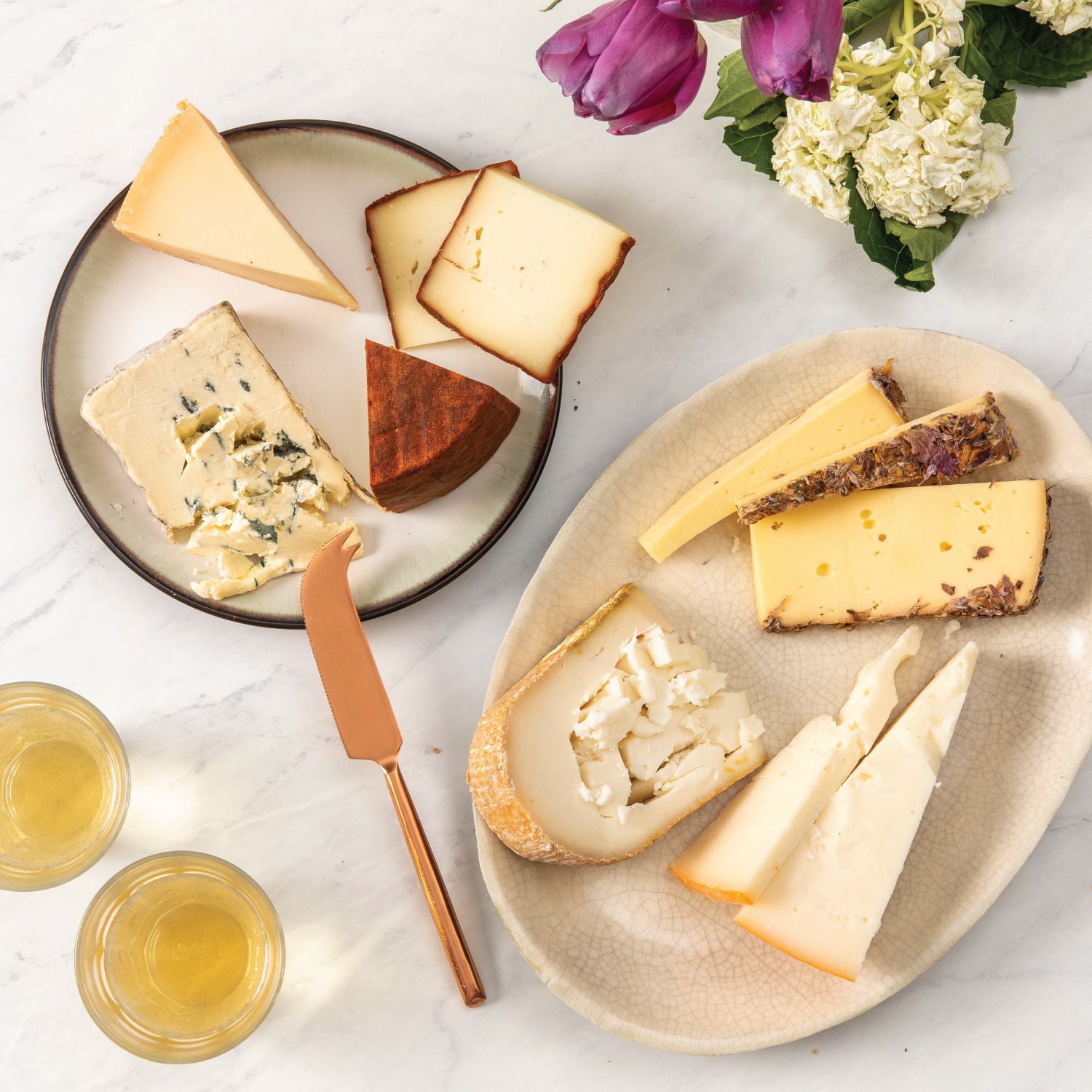
“For two guests, I would recommend featuring three different cheeses, all in varying styles, in quarter pound quantities,” Molier says. “A quarter pound of most cheeses will get you about four individual portions. If you’re looking to increase to four or five people, I would move into the half-pound zone and increase the number of cheeses as well. Here’s three pairings to get you started:
“Goat Log from Vermont Creamery with Sidehill Farm Blueberry Jam. This is a fresh cheese made in the ‘chevre’ style. A ‘chevre’ is a fresh, unaged goat’s milk cheese and a very popular style in France. Snag a Blueberry Jam from Sidehill Farms for a cheesecake-like pairing.
“Prairie Breeze from Milton Creamery with Murray’s Applebutter Preserves. This is a domestic cheddar, which is going to be a bit creamier than an English cheddar, which would be more on the ‘grassy’ side. You can chunk any cheddar up and serve it alongside our Applebutter Preserves for an instant picnic.
“Bayley Hazen Blue pairs well with any chocolate treat. Blues looks great on a board and when paired with chocolate, the result is something like a peanut butter cup.”
Embrace Abundance
“You want your board to appear plentiful, regardless of how much product you’re using. To achieve this look of plentifulness, smaller pieces on the board are going to help. Cut your cheeses into small sticks, triangles, or chunks. Your pairing items should be just as abundant, and smaller items like peanuts or dried cherries help create the look of quantity.”
Sweeten Things Up With Jam & Honey
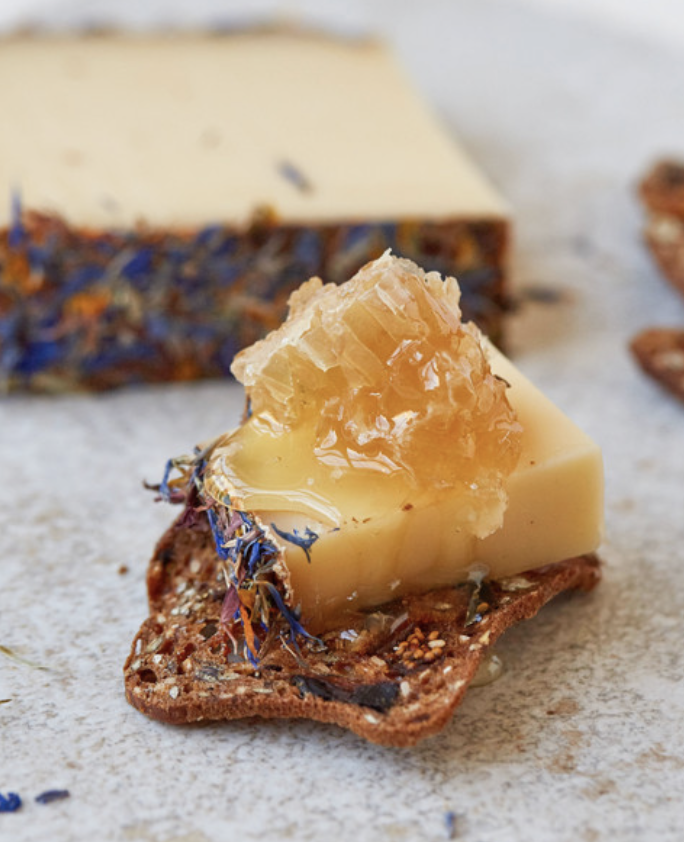
“Use small jam bowls as focal points. Creating the ‘controlled chaos’ look of a cheese board can be overwhelming. So it’s good to have some anchoring items on the board to work around. I would start construction by placing a small jam or honey bowl on the plate, and then start to expand from around it.
“We want our jam cellars to be relative to the size of our boards. Try to stick with three-ounce serving cellars if possible. If you’re stuck on what to use for a jam cellar, turn the lid of the jar upside down and fill that. You shouldn’t be able to see any of the interior and no one will even notice. Unless your jar is a mini, or you purposely wish to display the label, try to avoid putting the whole jar on the board.
“Sidehill Farms is a great place to start for any jams. If you’re looking for a honey, Red Bee Honey has huge chunks of comb in their jars, which look great on a board. Interested in a flavored honey? Bee Seasonal makes a Eucalyptus Honey, which adds an essence of freshness to anything you put it on.
“I would recommend having a small spreading knife tucked into the jam for a few reasons. Soft cheeses, although great with jam, are difficult to pick up and dip, so a knife would be better here. Also, pieces of cheese can break off and fall into the jam, which would compromise the presentation. You can also control the amount of jam being used when spreading with a knife, rather than dunking it into the jam and seeing what sticks.”
Cut Your Cheese Correctly
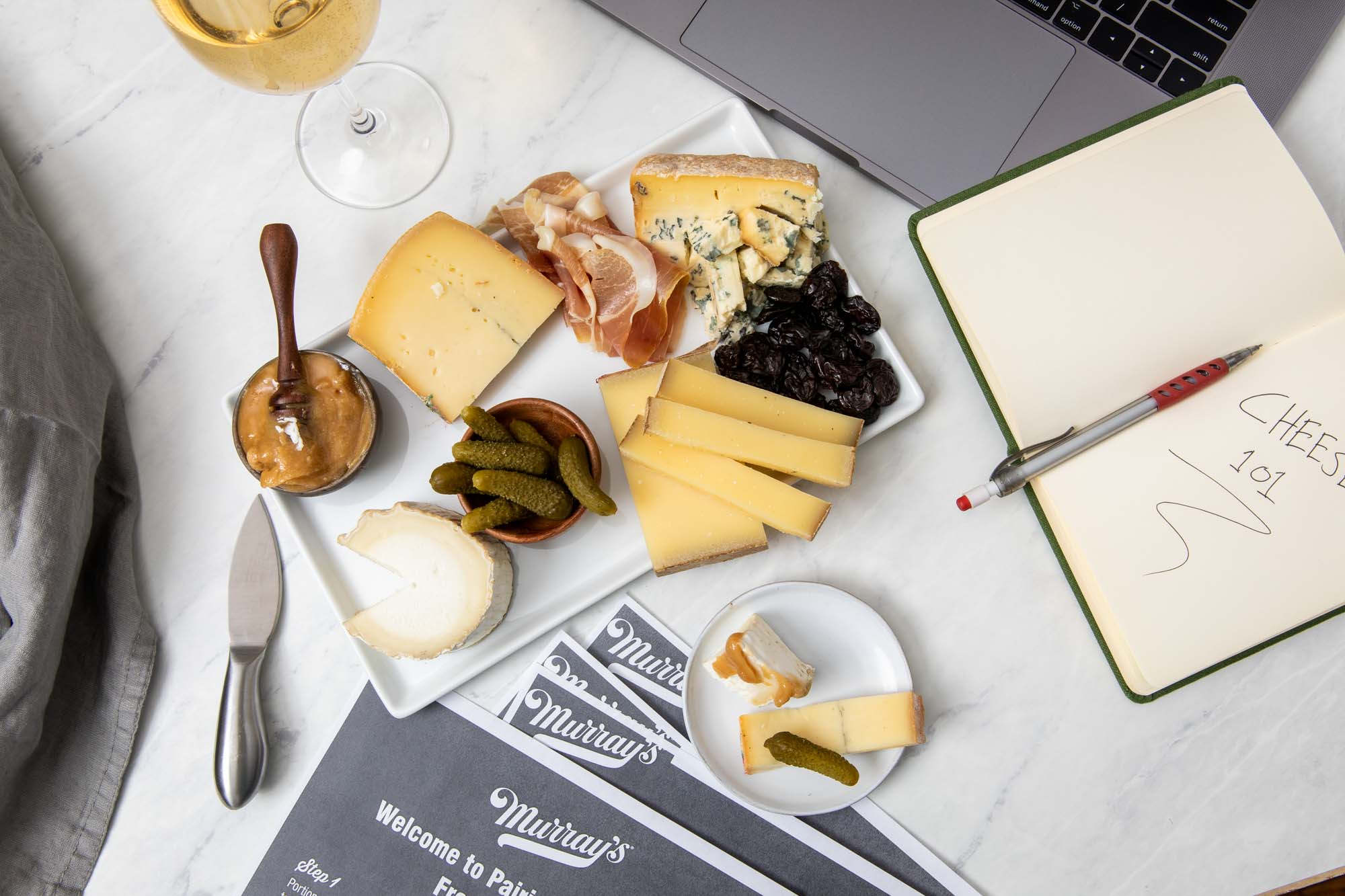
“A good cheeseboard will feature different kinds of shapes. For the thin matchstick-like pieces (technically referred to as a ‘batonette’) a nice square hunk of Comte or Gruyere will yield the snack-friendly cutting shapes. Alpine cheeses are great for this. Just place the block down flat and cut vertical rectangles about ¼” thick. Be sure to use a non-serrated knife.
“Any cheese you get in a triangular wedge can be placed on its side and be cut into smaller triangle pieces. Luckily many cheeses come in this wedge shape. Simply lay the cheese on its side with the rind facing you, and vertically cut thin triangles (use a non-serrated knife again here). Fanning your cheeses not only presents them in a visually appealing way, but it’s an inviting way to make the pieces accessible.
“When serving soft cheeses, a cheese wire is absolutely essential. You can also use industrial sewing thread or waxed, unflavored dental floss. The lack of surface area on these tools allows sharp, clean cuts and prevents the cheese from sticking to a blade.
“For a rustic-crumbled look, go straight for an aged Parmigiano Reggiano or crumbly cheddar. You can use ‘chunking’ knives for this, or just use the point of any sharp knife and twist. The chunks can be arranged in a pile next to a pairing jam or honey.”
When It Comes to Soft Cheese, Let it Brie
“Soft cheeses can be particularly tricky to serve on a board. If you’re not able to slice your brie, I recommend serving a small wheel in its whole shape right on the board.
“Before serving, slice the top off your soft cheese and let it temper for about an hour so the texture softens. Surround the small wheel with crackers, fruits, or vegetables and dip into it instead.”
Swap Out Crackers For Color
“I like to use sliced red bell peppers on cheeseboards, especially alongside a softer cheese like the Goat Log or a Double Crème Brie. The peppers add a great pop of color and serve the same function as a cracker, but with a totally different feel.
“There are also a lot of vegetal notes in most bloomy rind cheeses, which link nicely with the pepper. It’s a great way to take the savory pairing route, while most cheese pairings tend to focus on sweet items.”
Place Cheeses Next To Pairing Items
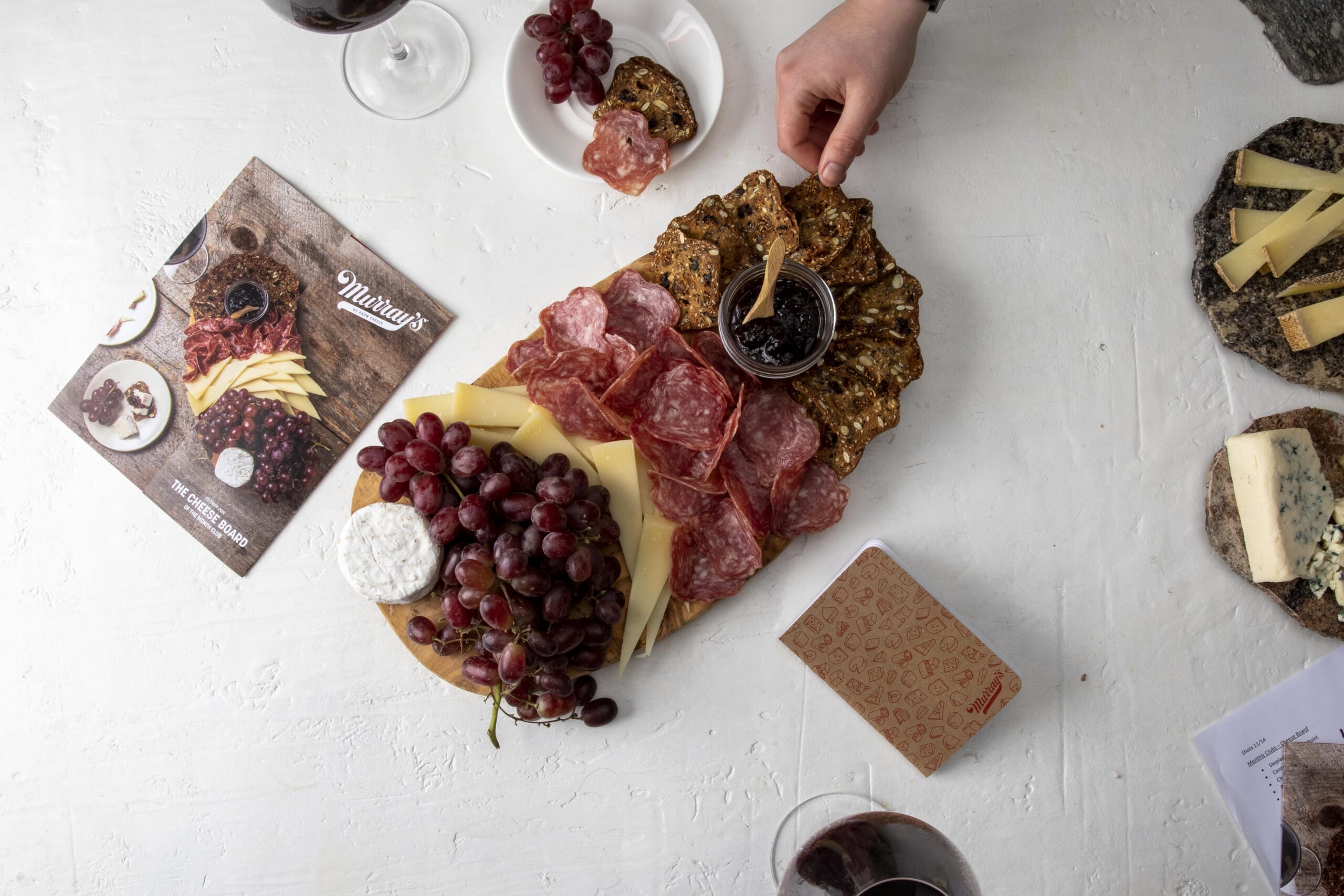
“Place your pairing items next to their intended cheese. This step may seem obvious, but it really helps answer the ‘what goes with what?’ question you’re likely to get. It gives your guests the quick answer, but also invites them to find a pairing of their own if they like.”
Flavored Vs. Neutral Crackers
“Cookies and crackers are always nice to have. Just be sure to make a conscious choice as to whether you’d like them flavored or neutral. A neutral cracker will allow the cheese and pairing items to shine, while a flavored cracker will certainly bring more to the mix.”
Cheesy Wine Pairings
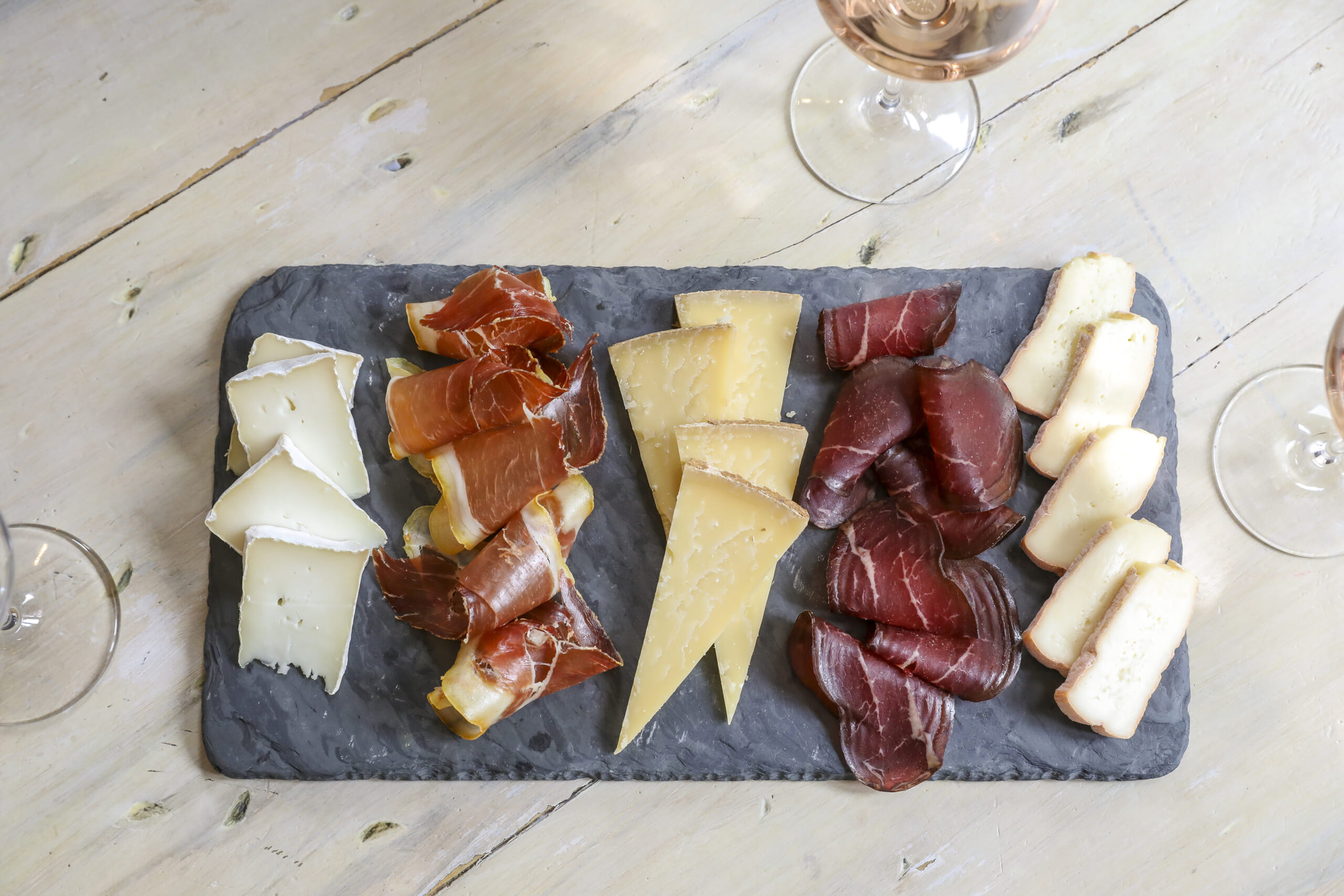
“Champagne or any sparkling wine is going to be a great partner for cheese because the slight carbonation from the bubbles will literally scrub your palette clean. There is also a fresh acidity with sparkling white wines that helps produce a saliva response—it literally gets your mouth watering.
“Our saliva is rich in enzymes that help that breakdown of fats still on the palette, helping to refresh your senses and get your ready for another bite. For that reason I also recommend dry rosés—they come with a slight herbaceous quality that speaks quite nicely to the savory nature of cheese. And a dry sherry pairing to compliment your cheese board just might change your life.”
Bubbles on a Budget
“If you don’t feel like splurging on Champagne, go for a Cremant. This is a style of sparkling wine that is made in the exact same method as Champagne, its just outside of the Champagne region so you can get way more variety at a much better price point. I featured this Calvet Cremant de Bordeaux in a recent wine class—it’s delicious and clocks in at about $20.”
Board Approval
“Although wooden cheese boards have a visual appeal to them, I recommend straying away from them, if possible. Wood is a porous item and it can trap moisture, where bacteria likes to hang out. If you’re using a wooden board, no worries—just be sure to give it a good wipe afterwards with a food-safe disinfectant and don’t get it too wet. Wooden boards are great if you’re using them for short amounts of time. Slates are a great alternative to wood as well.”
https://www.instagram.com/p/CLDDHOJpVfC
To schedule a virtual cheese board or wine-pairing class at Murray’s Cheese, click here.
